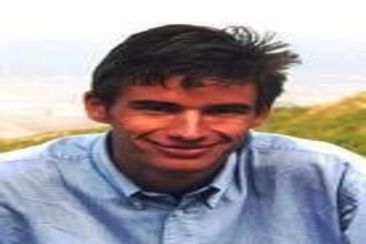
Christian HELLMICH,
Director of Institute for Mechanics of Materials and Structures, Vienna University of Technology,
www.imws.tuwien.ac.at
Abstract:
We here report recent developments where engineering sciences and mechanics, the basis for reliable design, construction, and maintenance in civil and mechanical engineering, have been successfully adapted and transferred to the needs of regenerative biomedicine. Thereby, our key target is fracture safety of bony organs and scaffold-organ compounds. The basis for our safety assessment is a mathematical model for the multiscale (“nano-to-macro”) mechanics of bone tissues across the entire vertebrate anial kingdom. This model traces the fracture of bone tissues, down to sliding phenomena between nanocrystals, and breaking of collagen molecules [4].
Besides from setting new standards also in the field of theoretical mechanics itself [7] these mathematical developments, always accompanied by cutting edge experimental activities [6], have paved the way towards computer-aided design of bone tissue engineering systems, as exemplified through a clinically approved hydroxyapatite granule system for dental tissue engineering [9-10]. Such novel methods can also be straightforwardly coupled to valuable information from Computed Tomography: By means of appropriate merging of continuum micromechanics and X-ray physics, the compositional and mechanical characteristics of the matter found within each and every voxel can be revealed. In this context, we recently deciphered the role of bone anisotropy in assessing biting deformations [5], the resorption properties of TCP biomaterial scaffolds [3], the load carrying behavior of glass-ceramic scaffolds [8], the safety factor of human vertebrae, and of the aforementioned hydroxyapatite globules under under physiological loading [1-2].
[1] Blanchard, R., Morin, C., Malandrino, A., Vella, A., Sant, Z., and Hellmich, C.: “Patient‐specific fracture risk assessment of vertebrae: A multiscale approach coupling X‐ray physics and continuum micromechanics”, International journal for numerical methods in biomedical engineering, 32, 9(2016).
[2] Dejaco, A., Komlev, V. S., Jaroszewicz, J., Swieszkowski, W., and Hellmich, C.: “Fracture safety of double-porous hydroxyapatite biomaterials”, Bioinspired, Biomimetic and Nanobiomaterials, 5, 1(2016), pages 24-36.
[3] Czenek, A., Blanchard, R., Dejaco, A., Sigurjónsson, Ó. E., Örlygsson, G., Gargiulo, P., and Hellmich, C.: “Quantitative intravoxel analysis of microCT-scanned resorbing ceramic biomaterials–Perspectives for computer-aided biomaterial design”, Journal of Materials Research, 29, 23(2014), pages 2757-2772.
[4] Fritsch, A., Hellmich, C., and Dormieux, L.: “Ductile sliding between mineral crystals followed by rupture of collagen crosslinks: experimentally supported micromechanical explanation of bone strength”, Journal of Theoretical Biology, 260, 2(2009), pages 230-252.
[5] Hellmich, C., Kober, C., and Erdmann, B.: “Micromechanics-based conversion of CT data into anisotropic elasticity tensors, applied to FE simulations of a mandible”, Annals of biomedical engineering, 36, 1(2008), pages 108-122.
[6] Luczynski, K. W., Steiger-Thirsfeld, A., Bernardi, J., Eberhardsteiner, J., and Hellmich, C.: “Extracellular bone matrix exhibits hardening elastoplasticity and more than double cortical strength: evidence from homogeneous compression of non-tapered single micron-sized pillars welded to a rigid substrate”, Journal of the mechanical behavior of biomedical materials, 52(2015), pages 51-62.
[7] Morin, C., Vass, V., and Hellmich, C.: “Micromechanics of elastoplastic porous polycrystals: theory, algorithm, and application to osteonal bone”, accepted for publication in International Journal of Plasticity
[8] Scheiner, S., Sinibaldi, R., Pichler, B., Komlev, V., Renghini, C., Vitale-Brovarone, C., Rustichelli, F., and Hellmich, C.: “Micromechanics of bone tissue-engineering scaffolds, based on resolution error-cleared computer tomography”, Biomaterials, 30, 12(2009), pages 2411-2419.
[9] Scheiner, S., Komlev, V. S., and Hellmich, C.: “Strength increase during ceramic biomaterial-induced bone regeneration: a micromechanical study”, International Journal of Fracture, 202, 2(2016), pages 217-235.
[10] Scheiner, S., Komlev, V. S., Gurin, A. N., and Hellmich, C.: “Multiscale Mathematical Modeling in Dental Tissue Engineering: Toward Computer-Aided Design of a Regenerative System Based on Hydroxyapatite Granules, Focussing on Early and Mid-Term Stiffness Recovery”, Frontiers in Physiology, 7(2016).
Biosketch:
http://www.imws.tuwien.ac.at/mitarbeiter/uebersicht/profil/HELLMICH-1
DF-Punkt: 1